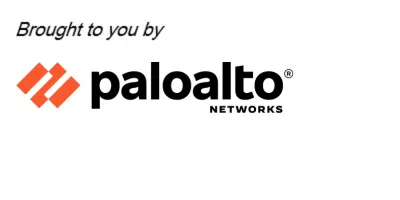Seamless security for hybrid work: How firms can help protect business data across all devices
For today’s borderless workplace, Palo Alto Networks’ Prisma Access Browser delivers browser security that moves with your people – keeping data protected wherever work takes them
HYBRID workplace trends are transforming how and where we work, offering unprecedented flexibility while creating cyber security vulnerabilities many organisations struggle to address.
Today, 56 per cent of the workforce no longer work solely from an office – 31 per cent have adopted hybrid work arrangements, while 25 per cent work fully remotely, according to research by cyber security company Palo Alto Networks and consultancy firm Omdia.
While some companies and organisations are seeking a full return to the office, the study that was released in February projects that 42 per cent of employees will still have some form of remote work arrangement in the next 18 months. In other words, hybrid work is here to stay.
As a result, securing company networks has become much more complex. Employees are no longer confined to traditional office spaces and can now work from virtually anywhere. They can log in not only from home offices, but also neighbourhood cafes, airport lounges and even across borders. This shift has introduced a range of security challenges, making it much harder for organisations to secure their networks.
Adding to this challenge is the growing prevalence of Bring Your Own Device (BYOD) policies, where employees gain flexibility by using their own devices that they are more familiar and comfortable with. However, it also heightens the risk of data exposure as employees are now able to access company data on their personal devices.
Today, 90 per cent of organisations allow employees to access corporate data from personal devices, and employees spend 85 per cent of their workday on browser-related activities on these devices, according to the Omdia study.
Bad cyber security habits, such as visiting unsafe websites, are harder to monitor and prevent on personal devices. This makes safeguarding both users and organisations from cyber threats such as phishing, malware, eavesdropping and data exfiltration much more difficult.
Many organisations can no longer realistically ban personal devices at work. They must now balance security needs with employee convenience. However, security and IT teams find it challenging to protect today’s complex technology environment, which includes cloud applications, personal devices and artificial intelligence (AI) tools. Research shows that 65 per cent of organisations have little to no oversight of data shared through AI tools.

A new approach to cyber security
One thing many organisations realise by now is that traditional perimeter-based security is no longer enough. They must adopt advanced security frameworks such as Secure Access Service Edge (SASE) and secure browsers to protect workflows in this new environment.
SASE-based security tools, which include firewalls, secure web gateways and zero-trust network access, help to enhance protection across hybrid work environments. Each plays a role in making sure devices logging into a corporate network are checked and secure before access to sensitive data is given.
Meanwhile, specialised secure browsers offer visibility into cloud services and AI applications that employees use when in the browser. These browsers let organisations better control access to harmful websites and applications compared with standard web browsers.
Employees may prefer these secure browsers because they offer better speed and usability than older security approaches like virtual desktops, which often slow down performance.
Organisations should also consider centralised security management systems. These work with corporate login credentials to provide strong authentication and protection against malicious software, creating a comprehensive security approach.
Securing the modern digital office environment
Organisations today are focusing on balancing security and flexibility, especially as hybrid work becomes the norm.
In this work landscape, Palo Alto Networks’ Prisma SASE solution and its Prisma Access Browser can play a crucial role in enhancing security controls and visibility for cloud-based applications, including GenAI. Having secure browsers in place can help organisations to:
- Enhance security controls and visibility: Secure browsers provide organisations with greater oversight of cloud-based applications and user activity, including GenAI usage. They help enforce security policies, ensuring compliance and reducing risks associated with shadow IT.
- Defend against phishing and browser-based attacks: With built-in protections, secure browsers mitigate risks from phishing attempts and malicious websites, preventing users from inadvertently exposing credentials or downloading malware.
- Secure work in the browser, regardless of device: By deploying secure browser extensions, organisations can ensure that users are authenticated before accessing company resources. This approach extends the “zero trust” principle by verifying every session and securing work done within the browser.
- Improve user experience without compromising security: Secure browsers support seamless access to business resources without the latency issues associated with traditional security measures such as virtual desktop infrastructure or remote browser isolation. This helps to ensure employees can work efficiently while maintaining a secure environment.
- Integrate into broader security frameworks: Secure browsers align with enterprise security initiatives such as SASE, enhancing an organisation’s layered security approach. They provide visibility into end-user application access and help address challenges associated with encrypted network traffic.
As browser security solutions continue to evolve, they are becoming a critical component of modern security architectures, helping organisations navigate the growing complexity of cloud-based applications and diverse IT environments.
Even as cyber threats evolve at an unprecedented pace, cyber security tools today have advanced capabilities that allow companies to protect themselves while ensuring employees can work productively without disruption.
At a time when employees are embracing a hybrid work style, these cyber defences enable organisations to push ahead with their digitalisation efforts while ensuring they are adequately protected against current and future threats.
Learn more about Palo Alto Networks’ Prisma Access Browser.

Share with us your feedback on BT's products and services
